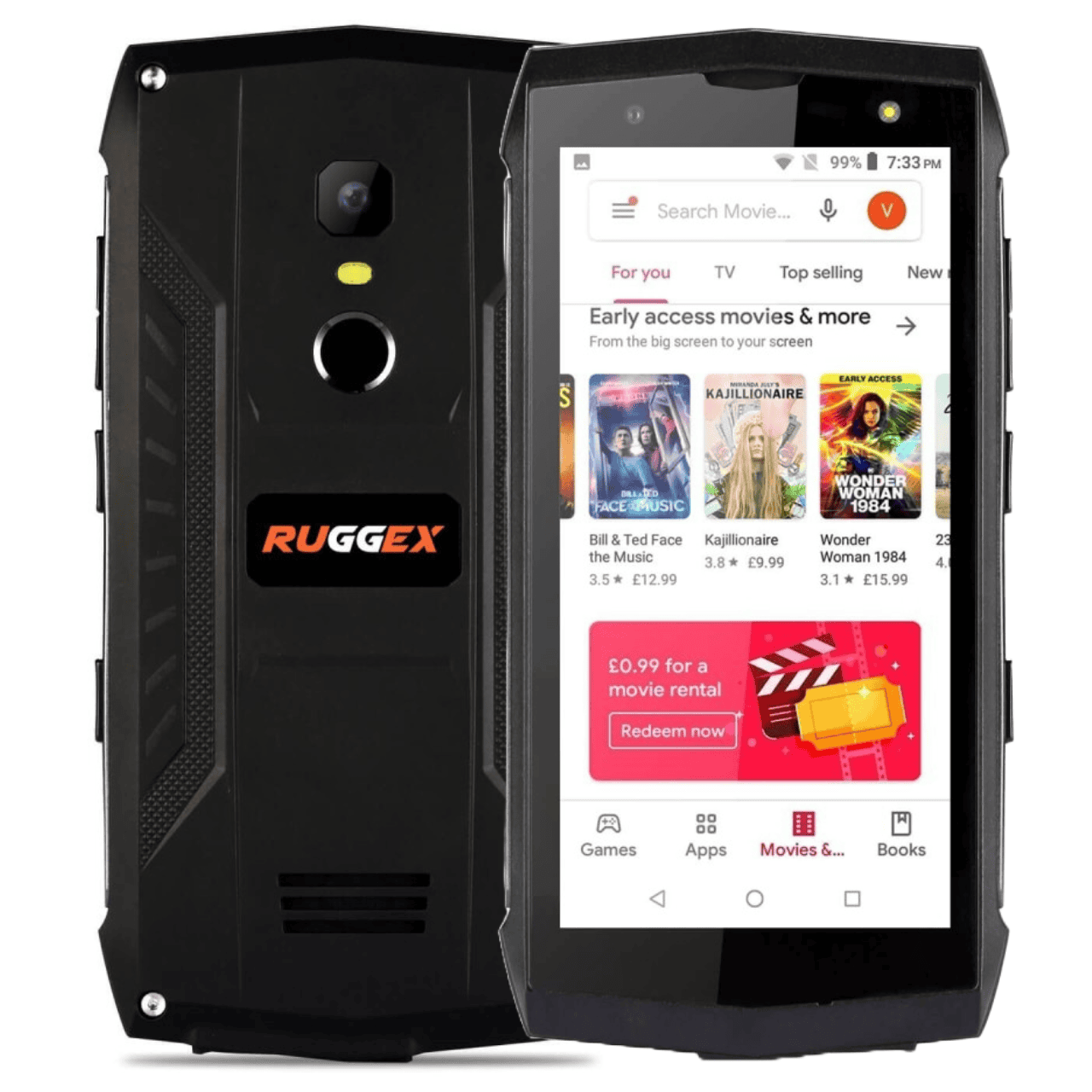

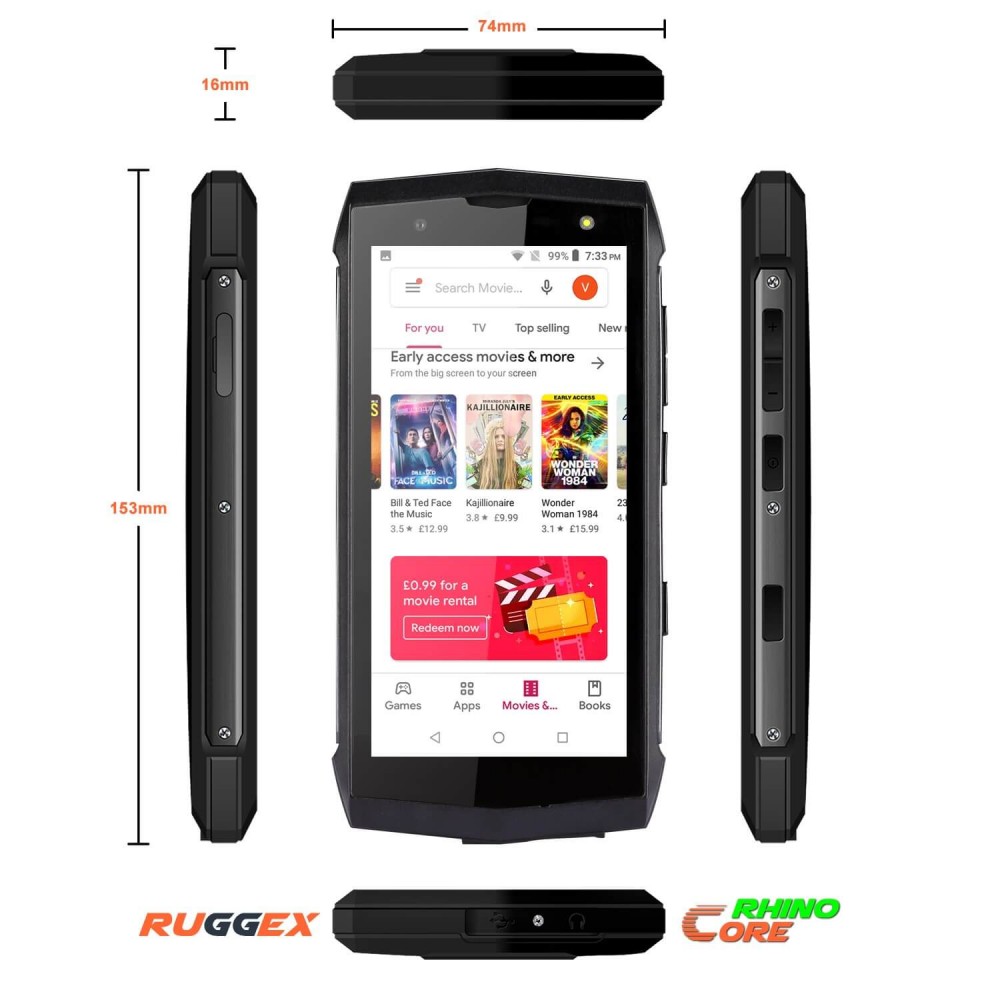
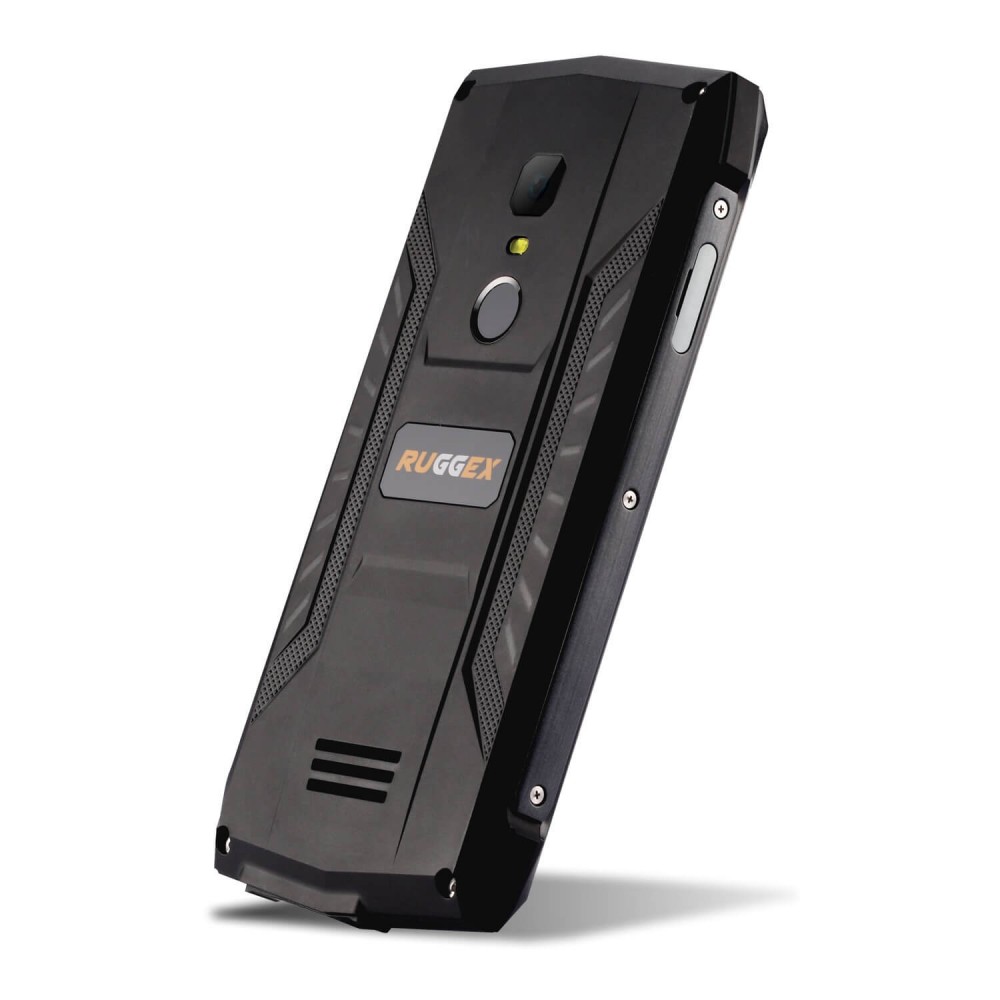
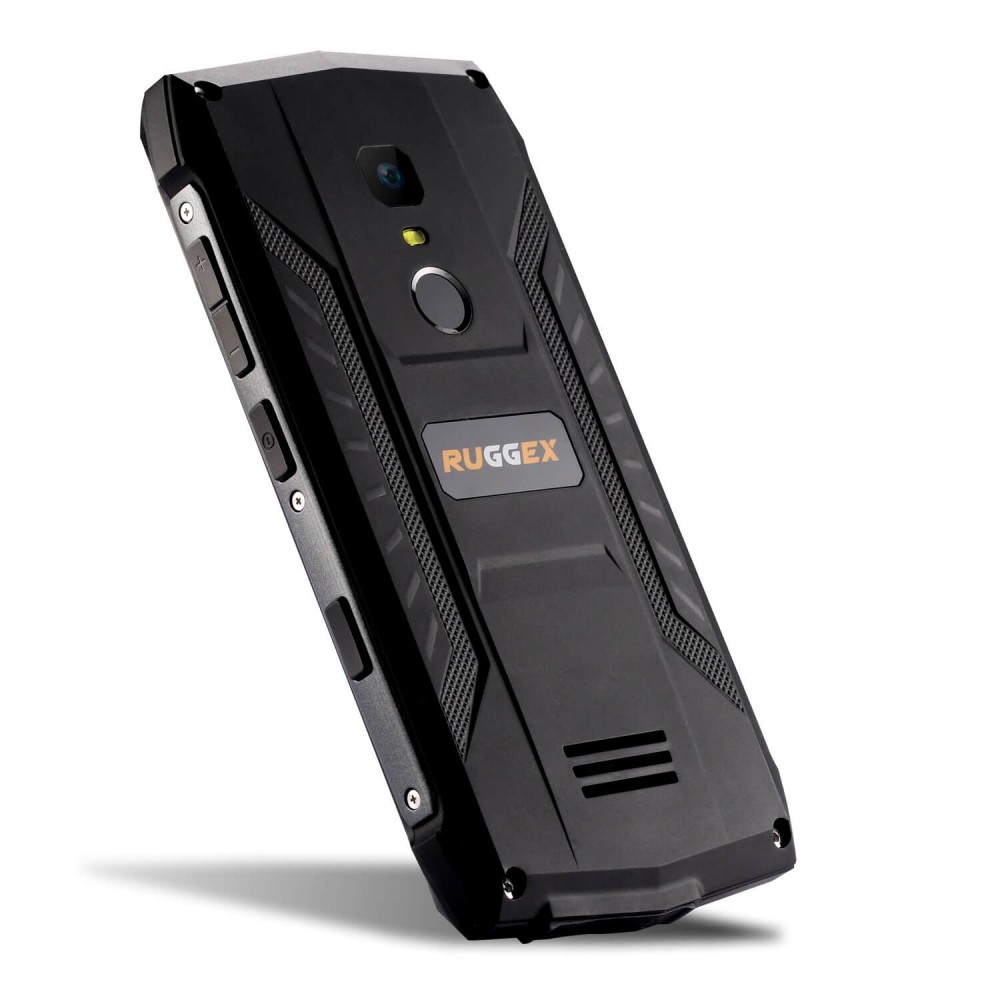
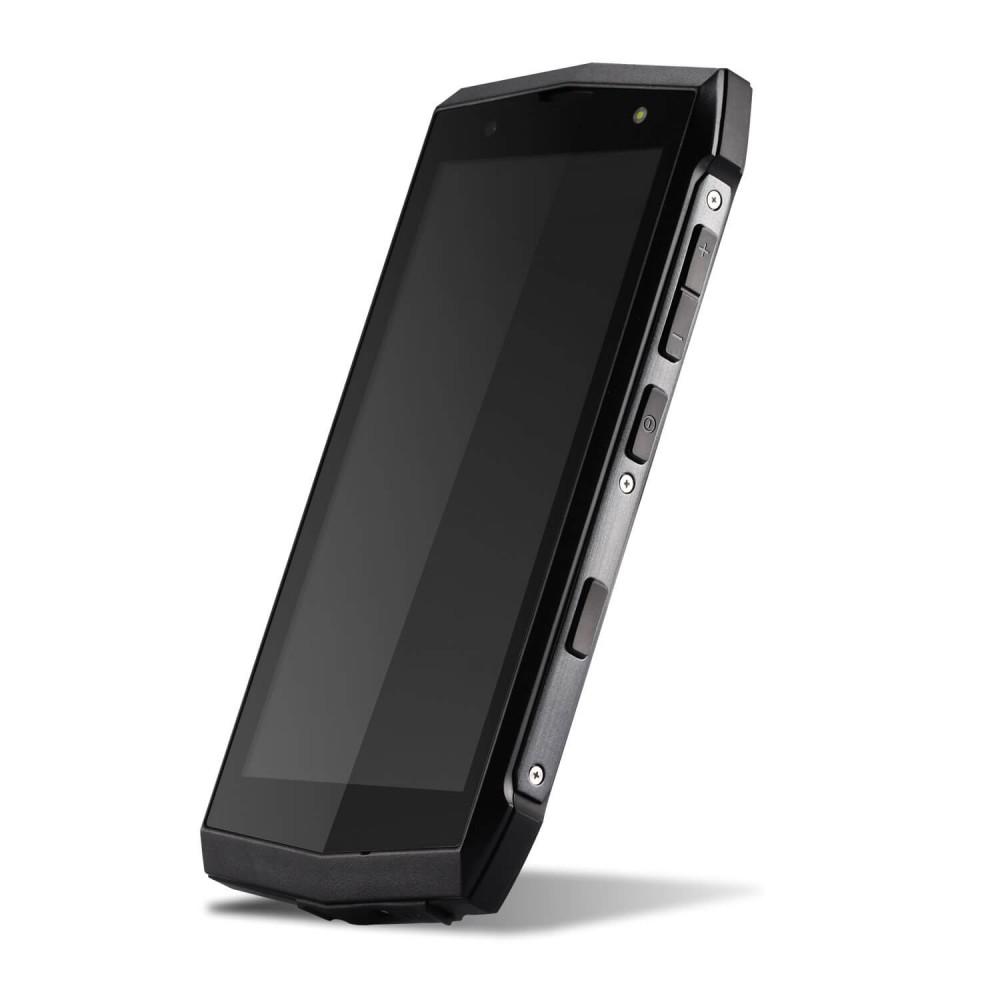
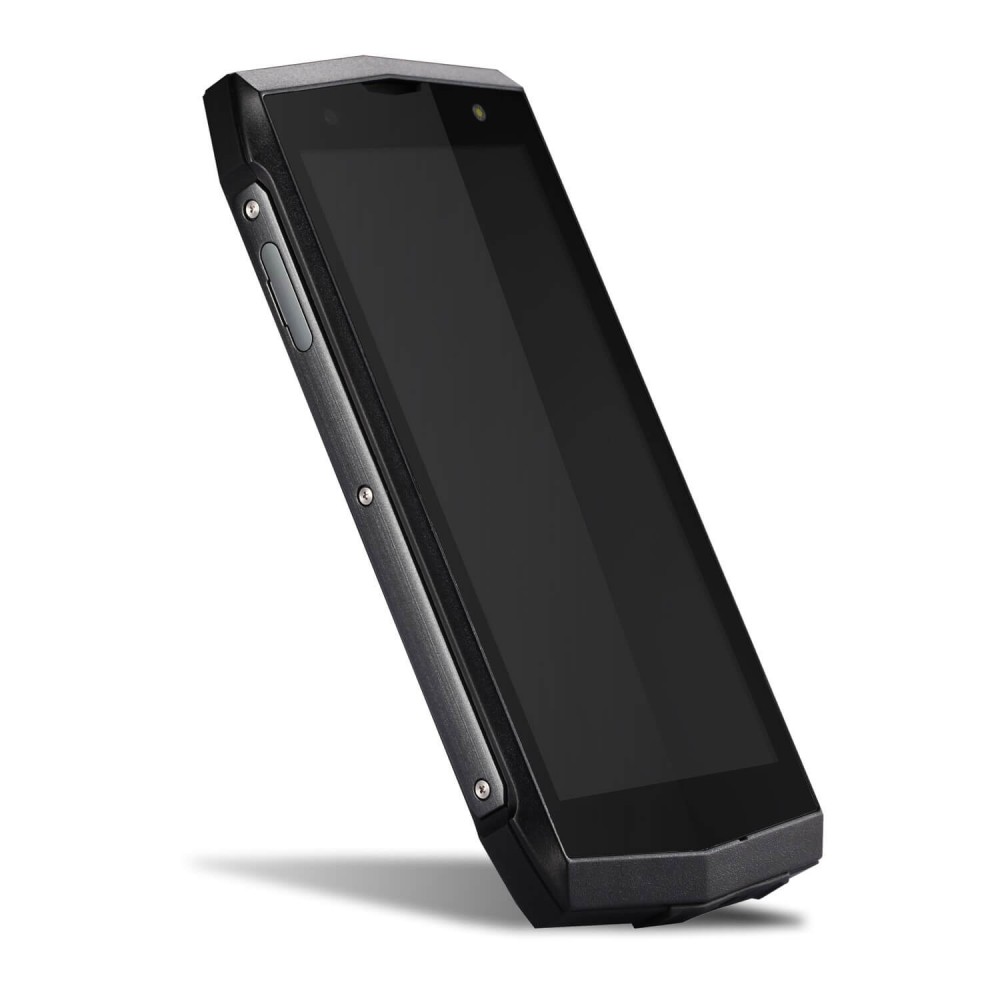
The Ruggex Rhino Core 4G is a rugged smartphone designed for durability and performance in challenging environments. Launched in August 2021 and released in September 2021, this device boasts impressive rugged features while offering essential smartphone functionality.
The Rhino Core 4G is built to withstand harsh conditions, with an IP68 and MIL-STD-810G rating, making it resistant to dust, water, and drops from up to 1.2 meters onto concrete. Despite its robust build, it maintains a manageable size at 153 x 74 x 16 mm and weighs 235 grams. This makes it easy to handle while ensuring maximum protection. The phone is equipped with Rhino Glass, offering scratch resistance for extra durability.
The phone features a 5.0-inch IPS LCD touchscreen with a resolution of 960 x 480 pixels and an 18:9 aspect ratio. With a pixel density of 214 PPI, the display still provides a decent clarity for everyday tasks, and its scratch-resistant glass adds an extra layer of protection for outdoor use.
The Ruggex Rhino Core 4G is powered by the MediaTek MT6739 chipset, and it runs on Google Android 8.1 out of the box. It also has a quad-core 1.3GHz Cortex-A53 CPU and a PowerVR GE8310 GPU. The phone is equipped with 2GB of RAM and 16GB of internal storage, which can be expanded via a microSD card (though it uses the SIM 1 slot).
The device features an 8MP rear camera with PDAF for quicker focusing and it has an LED flash as well, while being capable of recording 1080p videos at 30fps. For selfies, there is a 5MP front camera with fixed focus and its own LED flash, which is ideal for low-light conditions.
The Rhino Core 4G supports a wide range of connectivity options, including Bluetooth 4.0, WiFi on both 2.4G and 5G bands, and NFC. It also has USB 2.0 for charging and data transfer. Navigation is supported by A-GPS, GLONASS, and BeiDou for accurate location tracking. The phone also includes a rear-mounted fingerprint sensor, an accelerometer, and proximity sensors for enhanced security and functionality.
The phone is powered by a 3750mAh non-removable Li-Ion battery, which should provide sufficient battery life for a full day of normal usage, especially given the phone’s modest display and hardware demands.
The Ruggex Rhino Core 4G is ideal for users who need a tough, reliable phone for outdoor or industrial environments. Its combination of rugged features, solid performance, and essential connectivity options makes it a great choice for professionals and adventurers alike. The table below contains the full specifications of the device.
| Launch This refers to the date when this device was officially introduced into the market. | Announced 2018, January / Released 2018, January |
| Brand / Model These are key identifiers that indicate the manufacturer or company that produces this smartphone, and the specific model of the phone. | Ruggex / Rhino Core 4G |
| 2G Bands 2G refers to the second generation of cellular technology and includes various frequency bands for basic voice and text communication. | 850 / 900 / 1800 / 1900 - SIM 1 and SIM 2 |
| 3G Bands 3G refers to the third generation of cellular technology, encompassing different frequency ranges for faster data speeds, mobile internet, and multimedia capabilities. | 3G Bands 850 / 900 / 2100 - SIM 2 only |
| 4G Bands 4G refers to the fourth generation of cellular technology, operating in specific frequency bands to provide significantly faster data speeds, supporting high-definition video streaming and advanced applications. | LTE Band B1, B3, B7, B20 |
| Ruggedity This indicates the device's durability and ability to withstand harsh conditions or impacts. It is a very popular term used with tough or rugged phones. IP68/IP69K are international ratings that measure a smartphone's resistance to dust and water. MIL-STD-810H is a military standard that sets criteria for the environmental and durability testing of electronic devices. It means this device has undergone various tests to demonstrate its resilience in challenging conditions, such as extreme temperatures, humidity, vibration, and shock. |
IP68 / Mil-STD-810G - Water / dust resistant / drop-to-concrete resistance up to 1.2m |
| Dimensions / Weight: This refers to the physical size and weight of the device, measured in millimeter (mm) and grams (g) respectively. | 153 x 74 x 16 mm / 235 grams |
| SIM SIM stands for "Subscriber Identity Module." It is a small card, typically inserted into a slot in a mobile phone, that contains important information for connecting the device to a mobile network. SIM cards can come in various sizes, including standard SIM, micro SIM, nano SIM, or even electronic (eSIM), depending on the phone's design. | Hybrid Dual SIM (Nano-SIM, dual stand-by) |
| Screen Display refers to the screen or visual interface of the device. It includes details such as screen size, resolution, and technology (e.g., LCD, OLED, AMOLED). | 5.0-inches / IPS LCD touch screen |
| Resolution Screen Resolution refers to the number of pixels that make up the display screen and is typically expressed as a combination of horizontal and vertical pixel counts (e.g., 1920 x 1080, 2560 x 1440, or 3840 x 2160). The screen resolution determines the level of detail and sharpness of the visual content displayed on the smartphone's screen. Higher resolutions generally result in crisper and more detailed images and text | 960 x 480 pixels / 18:9 aspect ratio / 214 PPI |
| Features Camera features encompass various functionalities and capabilities that enhance the device's photography and videography experience. These features can include Optical Image Stabilization (OIS) Panorama, HDR, Ai Mode, Night Mode, Portrait Mode, etc. | Scratch resistant glass (Rhino Glass) |
| OS This is the Operating System. It refers to the software platform that runs on the smartphone and manages the device's hardware and software resources. Common smartphone operating systems include Android (developed by Google), iOS (developed by Apple). | Google Android 8.1 |
| Chipset This refers to the integrated circuit that serves as the device's central processing unit (CPU). It plays a pivotal role in the smartphone's performance, speed, and energy efficiency. |
MediaTek MT6739 - Quad-core 1.3GHz Cortex-A53 - PowerVR GE8310 GPU |
| Memory This encompasses two components: storage capacity and RAM (Random Access Memory). Storage capacity, typically measured in gigabytes (GB) or terabytes (TB), dictates how much internal space is available for apps, files, and media storage. RAM, measured in gigabytes (GB), is temporary memory crucial for multitasking and app performance, with more RAM generally leading to smoother operation and faster task-switching capabilities. | 2GB RAM + 16GB ROM / SD-card support (uses SIM 1 slot) |
| Main The main camera, also known as the rear camera, is the primary camera on the back of the smartphone. It is typically used for capturing photos and videos in various scenarios and is often the more powerful and versatile camera on the device | 8MP rear camera with PDAF |
| Selfie The selfie camera, also known as the front-facing camera, is the camera on the front of the smartphone, primarily used for capturing selfies and video calls | 5MP selfie camera (fixed focus), with LED flash |
| Features Camera features encompass various functionalities and capabilities that enhance the device's photography and videography experience. These features can include Optical Image Stabilization (OIS) Panorama, HDR, Ai Mode, Night Mode, Portrait Mode, etc. | 1080p@30fps video recording / LED Flash |
| Connectivity This encompasses the device's ability to connect and communicate with other devices and networks. It includes features such as cellular connectivity, Wi-Fi, Bluetooth, NFC (Near Field Communication), and USB connectivity options. | Bluetooth 4.0 A2DP / WiFi 2.4G-5G / NFC / USB 2.0 |
| Navigation Navigation refers to the device's ability to determine and display location information and provide directions to users. This functionality is usually powered by Global Positioning System (GPS) technology. | A-GPS, GLONASS, BeiDou |
| Sensors This refers to the various built-in sensors that enable the device to gather information from its environment and interactions. Common sensors found in rugged smartphones may include fingerprint sensor, light sensor, barometer sensor among others. | Fingeprint (rear), accelerometer, proximity |
| Battery This section refers to the device's power source and its related specifications. This typically includes details such as the battery capacity, measured in milliampere-hours (mAh) or watt-hours (Wh), and it charging details. | Li-Ion 3750mAh, non-removable |
| Others This is a catch-all category that includes various additional features, specifications, or capabilities that don't fall under the major categories like display, camera, memory, or connectivity. | Color: Black |
These specifications were entered manually, hence we CANNOT guarantee 100% accuracy. Also, that your device is listed on this website DOES NOT call for reckless usage! It is crucial to exercise due diligence, as we cannot be held responsible for any damage to your device due to overconfidence in it built quality.
Leave a Reply